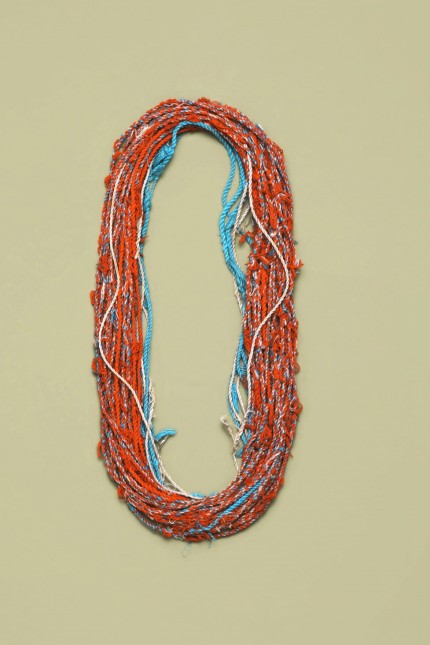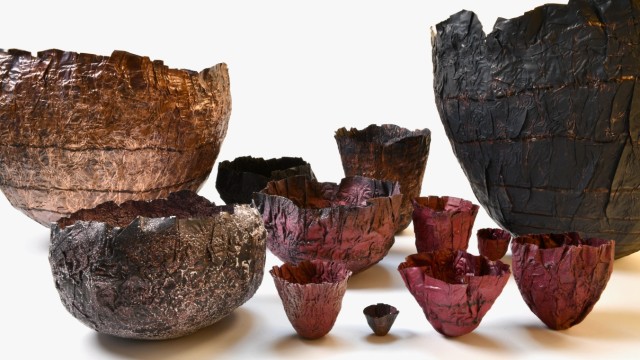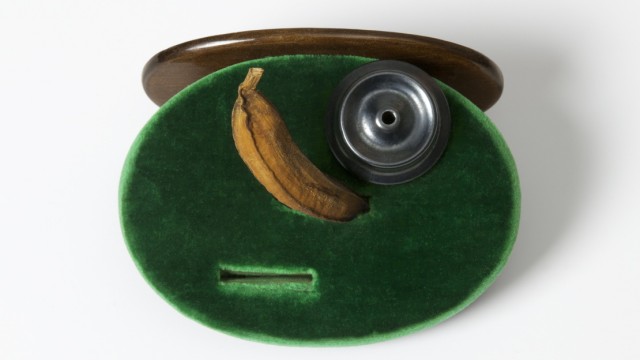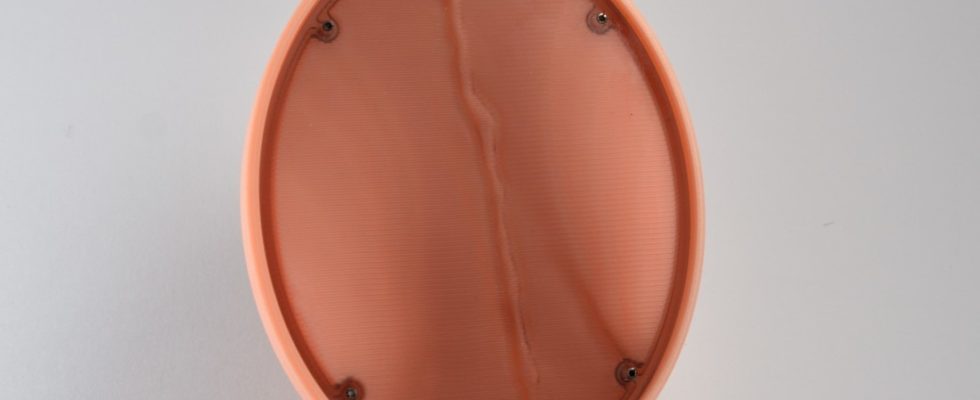Since Wednesday everything in Munich has once again revolved around the oldest art in the world, recharged by artists of our time: jewelry! The trigger for the event is the special jewelry show at the International Crafts Fair organized by the Chamber of Crafts for Munich and Upper Bavaria. The curated exhibition, launched by Herbert Hoffmann in 1959, has developed into the nucleus of a city-wide mega-event that attracts collectors, gallery owners, museum people and creative people from all over the world. So that curious people can plan their path from gallery to showroom to studio, in addition to the printed flyer, there is a central information point in the Ruffinihaus at Rindermarkt, which also has a fresh web presence (www.schmuck-infopoint.de).
The highlight of every jewelry week is the ceremonial opening of a large exhibition of works in the rotunda of the Pinakothek der Moderne. This time the new collection offers a world premiere. It shows the Norwegian Sigurd Bronger’s thoughtful, twisted, carefully constructed, cabinet-of-curiosity supporting objects (review to follow).
Identity and transience
Author’s jewelry is closer to life than any other branch of the fine arts. Worn on the body in public, the small-format objects focus on existential questions that are as old as humanity: origins, identity and belonging, love and friendship, memory and transience.
Norman Weber, this year’s curator of the special show, selected 61 pieces from 630 applications received from around 50 countries. This time there are again a striking number of brooches. Maybe because Weber himself prefers to make brooches. Last year he received the prestigious Friedrich Becker Prize for his computer-generated and 3D-printed, handcrafted plastic brooches, which are vaguely reminiscent of faceted jewels.
For weavers, brooches are largely autonomous works of art. The artistic director of the Kaufbeuren-Neugablonz State Vocational School for Glass and Jewelry selected pieces that he wanted to see for himself. Above all, he chose artists from a wide range of cultures and generations who had not been represented in previous years.
With a childlike joy of discovery, the Spaniard Juan José Ibáñez Piquera bent his old wire glasses frames so that they looked insect-like when hanging on a string. The Estonian Etli Tiitsar captures memories of childhood, parents and grandparents by laying fabrics from the family forest hut in meandering cords to form wood-framed island formations.
Anyone who has the images of the women’s demonstrations in Iran in their head will be deeply touched by the brooch by the Tehran goldsmith Azin Soltani: On the outside, her brooches show a brick composite typical of Iranian houses and on the hidden side facing the body, budding flower ornaments on a plaster background.
Tea shapes China’s self-image and has been one of the country’s export goods for 1,500 years. Pressed into tablets, the valuable item was even used as a means of payment for a time. Zhipeng Wang’s silver brooches have a surface made of pressed tea that looks like a marbled stone. The veins, however, refer to the paths the Munich Academy graduate took when approaching Europe.
Wounds and deep injuries are usually hidden and covered up. But they shape our lives. Slovakian Peter Machata shows scars from life-saving operations on his medallions.
This time the focus of the special show is the work of Georg Dobler.
(Photo: Georg Dobler)
Takayoshi Terajima’s most recent works are also about the image of the self. His brooches sparkle as if they were studded with rhinestones. Like a picture puzzle, faces appear in the oblique view, sometimes pop stars, sometimes kung fu fighters, sometimes manga characters, sometimes aliens, mostly male, sometimes with female features. These medallions, masterfully engraved in metal, are based on the artist’s experiment with imaging AI. Day after day, the Japanese man living in Munich entered the data he needed to obtain a residence permit in Germany into the program. Day after day he received a new image that was supposed to be him. Lots of clichés – not free from racism. But what is our view of strangers?
It is one of the traditions of the special jewelry show that on Saturday afternoon one of the groups of works on display will be awarded the Herbert Hoffmann Prize by the Society of Craft Fairs. The idea, craftsmanship perfection, wearability and decorative effect are evaluated by a top-class jury.
The tradition of the special show also includes honoring a “modern classic”. This year the focus is on the work of Georg Dobler, who, as a professor at the Hildesheim University of Applied Arts and Science, has done a lot for the aesthetic education of young people. His main theme is illusions, expressed in delicate, sometimes three-dimensional wire brooches, massive crystal jewelry or cosmic picture collages.
Special show “Jewelry 2024” at the craft fair, Munich Trade Fair, Hall B1, until Sunday, March 3rd, 9:30 a.m. – 6 p.m
Jewelry through history

The exhibition “Across the Line” also features John Park’s necklace made from hand-twisted cord made from used clothing.
(Photo: Eva Jünger)
The instructive exhibition “Across the Line” in the Craft Gallery takes you back to the beginnings of all jewelry 75,000 years ago. From the first twisted cord on which tiny snail shells were strung like beads, to cords into which First Nation artists like Lisa Waup and John Parks incorporate memories of their culture, which was largely destroyed by the colonizers, to the expansive wire lines of the Nelly van Oost the arc of history is drawn.
Everyone who visits the sensually exhilarating exhibition receives a bracelet made from a string made from the Stone Age, which is still essential to the Eipo culture in New Guinea from the cradle to death. In the fine nets made from this cord twisted on the thigh, mothers carry their children, the harvest, and ultimately the dead are buried in them. Cords and linear structures have connected people for thousands of years and tell haunting, sometimes seemingly endless, intricate stories.
jewelry across the board, Gallery Crafts, Max-Joseph-Straße 4, Saturday 10 a.m. – 3 p.m., until April 13th, Tuesday to Friday 10 a.m. – 6 p.m., Thursday until 8 p.m., Saturday until 1 p.m. [email protected]
Thoughtful lightweights

Symbols of fragile life: the works of Bettina Dittlmann.
(Photo: Michael Jank)
This time the Kunstgewerbeverein’s gallery also has something unusual and expansive to offer. The jewelry artist Bettina Dittlmann, who has won many awards for her delicate, enameled wire brooches and tinder-strewn magnetic objects, has been forging a vessel out of paper-thin copper and fine silver every day since last summer.
Inspired by dented buckets and bowls that can be found near abandoned farms in the Lower Bavarian forest, the artist has “raised” folded, wrinkled, wavy bowls – fascinating in the variety of similar things, in the iridescent depth of the forged copper and the flowing play of glowing red colors Enamels. Presented in chronological order on a black pedestal that cuts through the gallery space, the approximately 200 vessels appear to be filled with more than just past and past times. The thoughtful covers are also symbols of fragile life. On Sunday lunchtime, the arts and crafts association is offering a conversation with the artist.
Bettina Dittlmann: Not nothing – but a lot. Gallery of the Bavarian Art Association, until April 6th, Pacellistraße 6-8, www.bayerischer-kunstgewerbeverein.de
Serious games

Brooches that can be seen: Here Otto Künzli’s “The Professionals VI” from 2020.
(Photo: Otto Künzli, VG Bild-Kunst, Bonn 2024)
Following on from older work cycles that dealt with eyes, both sighted and blind, Otto Künzli presents his most recent works with his usual aplomb under the title “The Professionals”. It is his tenth exhibition at the Wittenbrink gallery, which specializes in contemporary art. With quiet humor, the world-famous jewelry artist has created brooches with facial features from the velvet cushions on which jewelers usually present diamond rings and other precious items: here a pair of old bar brooches as eyebrows, there a dried banana as a nose, or a piece of tourmaline like a cigarette butt the mouth-like opening. In a white tower of drawers, spread out on white Japanese paper, there are ghostly faces cut into the thinnest slices of buffalo bone. Transience is also a transparent motif here. Even a perfectly geometrically constructed golden lightning bolt cannot distract from this.
Otto Künzli: The Professionals, Galerie Wittenbrink, Türkenstraße 16, until March 9th, www. galerie-wittenbrink.de

